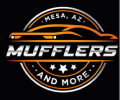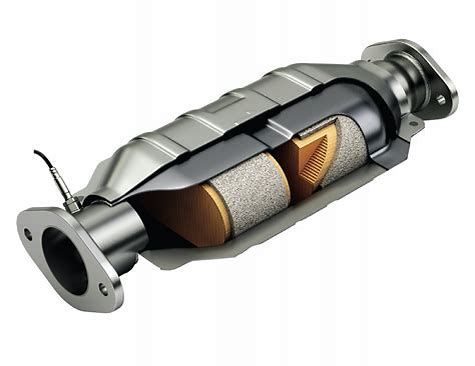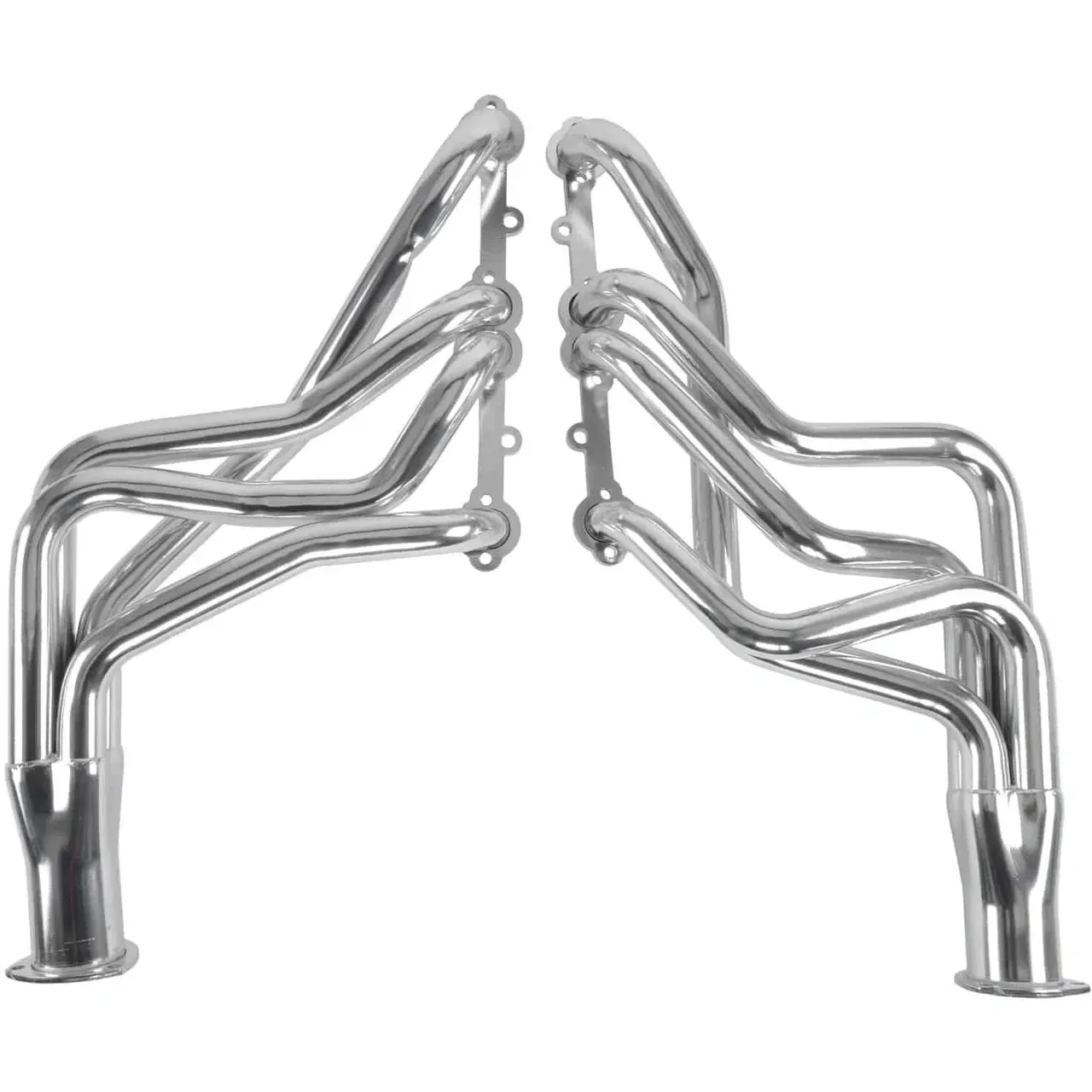Loading ...
Missing business hours data / Error occurred while getting the data.
New Paragraph
Loading ...
Missing business hours data / Error occurred while getting the data.
480-798-5773
★
★
★
★
★
Review
Blog

By Kristi Damon
•
30 May, 2023
Aftermarket modifications to car exhaust systems offer a range of potential benefits, including performance improvements, sound enhancements, and aesthetic changes. Let' s explore each of these aspects in detail: Performance Improvements: Upgrading the exhaust system can lead to several performance enhancements, such as: a. Increased Horsepower and Torque: By reducing exhaust backpressure and improving exhaust flow, aftermarket exhaust systems can help the engine breathe more efficiently. This can result in increased horsepower and torque output, especially at higher RPMs. b. Enhanced Throttle Response: Improved exhaust flow allows for quicker evacuation of exhaust gases, leading to better throttle response and reduced turbo lag in forced-induction engines. c. Weight Reduction: Aftermarket exhaust systems often use lighter materials like stainless steel, titanium, or carbon fiber, reducing overall vehicle weight. This weight reduction can improve acceleration, handling, and fuel efficiency. d. Optimized Exhaust Gas Flow: Some aftermarket exhaust systems feature larger-diameter piping, smooth bends, and performance-oriented mufflers. These design elements help minimize restrictions and maximize exhaust gas flow, allowing the engine to perform at its best. Sound Enhancements: Sound is an important aspect for many car enthusiasts, and aftermarket modifications can deliver various sound enhancements: a. Aggressive Exhaust Note: Performance-oriented aftermarket exhaust systems often produce a more aggressive and sporty exhaust sound compared to stock systems. This can be achieved through changes in muffler design, the addition of resonators, or the use of straight-through or chambered mufflers. b. Tunable Sound: Some aftermarket exhaust systems provide adjustable sound levels, allowing drivers to customize the exhaust note according to their preferences. This is achieved through the inclusion of valves or electronically controlled baffles that can be opened or closed. c. Improved Engine Sound Feedback: Upgraded exhaust systems can enhance the auditory feedback from the engine, providing a more engaging driving experience. Aesthetic Changes: Aftermarket modifications can also transform the visual appearance of a car's exhaust system: a. Custom Exhaust Tips: Upgrading to aftermarket exhaust tips can change the overall look of the rear of the vehicle. Tips are available in various shapes, finishes, and sizes, allowing for personalized aesthetics. b. Different Exhaust Configurations: Aftermarket systems often offer different exhaust configurations, such as dual-exit setups or center-exit designs. These configurations can provide a distinct and eye-catching appearance, enhancing the vehicle's overall visual appeal. c. Unique Materials and Finishes: Aftermarket exhaust systems may feature unique materials like carbon fiber or polished stainless steel, which can add a touch of sophistication and style to the car's exterior. It's important to note that while aftermarket modifications can deliver these benefits, it's crucial to comply with local regulations and consider the impact on emissions and noise levels. Additionally, selecting reputable brands and seeking professional installation can help ensure optimal performance and durability.
28 Feb, 2023
Installing a custom exhaust system on your vehicle can greatly enhance its performance and sound. But, with so many options available in terms of tubing sizes and materials, it can be challenging to determine which one is the right fit for your needs. In this blog post, we will explore the different sizes of exhaust tubing and how they affect the sound of your vehicle. Exhaust Tubing Sizes Exhaust tubing comes in various sizes, typically ranging from 1.5 inches to 3 inches in diameter. The diameter of the tubing affects the exhaust flow rate, which in turn affects the performance of your vehicle. Smaller diameter tubing (1.5-2 inches) is suitable for low-powered vehicles, such as economy cars or small displacement engines. The smaller tubing size restricts the flow of exhaust gases, which creates back pressure that can improve torque at low RPMs. However, this restriction can also limit the performance of high-powered engines by reducing exhaust flow. On the other hand, larger diameter tubing (2.5-3 inches) is better suited for high-performance vehicles with larger engines. The larger tubing size allows for greater exhaust flow, reducing back pressure and allowing the engine to breathe more efficiently. This increased airflow can lead to improved horsepower and torque at higher RPMs, but may sacrifice some low-end torque. Exhaust Tubing Materials Another factor to consider when selecting exhaust tubing is the material used. The most common materials used for exhaust tubing are mild steel, stainless steel, and aluminum. Mild steel is the most affordable option, but it is prone to rust and corrosion over time. Stainless steel, on the other hand, is more expensive but offers better corrosion resistance and durability. Aluminum tubing is the most lightweight option, making it ideal for racing applications, but it is also the most expensive. Exhaust Sound The size of your exhaust tubing can also have a significant impact on the sound of your vehicle. Smaller tubing sizes generally produce a higher-pitched, more aggressive sound, while larger tubing sizes create a deeper, more resonant sound. If you are looking for a more aggressive sound, smaller diameter tubing can help achieve that. However, keep in mind that this can also create more interior cabin noise and may not be suitable for daily driving. Larger diameter tubing can produce a more refined exhaust note that is less intrusive to cabin noise, but it may not have the aggressive sound that some drivers prefer. Conclusion When it comes to selecting the right exhaust tubing size for your vehicle, it ultimately depends on your desired performance and sound preferences. Smaller tubing sizes may provide better low-end torque for smaller engines, while larger tubing sizes can increase high-end horsepower for larger engines. The material used also affects durability and corrosion resistance. And, lastly, the size of the tubing can affect the sound of your vehicle, with smaller tubing creating a more aggressive sound and larger tubing producing a more refined exhaust note.

22 Feb, 2023
Catalytic converters are one of the most important components of a modern car's exhaust system. They are responsible for converting harmful pollutants into less harmful emissions, making cars much cleaner and safer for the environment. In this blog post, we will explore what catalytic converters are, how they work, and their importance in reducing air pollution. What is a catalytic converter? A catalytic converter is a device that is installed in the exhaust system of a car to reduce the amount of harmful pollutants that are released into the atmosphere. These pollutants include carbon monoxide, nitrogen oxides, and hydrocarbons. Catalytic converters work by using a catalyst to convert these pollutants into less harmful substances like carbon dioxide, nitrogen, and water vapor. How does a catalytic converter work? A catalytic converter contains a ceramic or metallic substrate coated with a catalyst such as platinum, palladium, or rhodium. The catalyst acts as a chemical agent, facilitating the conversion of harmful pollutants into less harmful emissions. When exhaust gases pass through the converter, the catalyst causes a chemical reaction that breaks down the harmful pollutants into less harmful substances. There are two main types of catalytic converters: two-way and three-way converters. Two-way converters are used in older cars and are designed to reduce only two pollutants: carbon monoxide and hydrocarbons. Three-way converters, on the other hand, are used in modern cars and are designed to reduce three pollutants: carbon monoxide, nitrogen oxides, and hydrocarbons. Why are catalytic converters important? Catalytic converters play a crucial role in reducing air pollution. Cars are a major source of air pollution, and without catalytic converters, they would release much higher levels of harmful pollutants into the atmosphere. The use of catalytic converters has contributed significantly to improving air quality in many cities around the world. In addition to their environmental benefits, catalytic converters also have economic benefits. They help to improve fuel efficiency by reducing the amount of fuel needed to power a car. This, in turn, reduces the amount of money that people have to spend on gasoline. Conclusion Catalytic converters are an essential component of modern cars. They help to reduce harmful emissions and make cars much cleaner and safer for the environment. As air pollution continues to be a major global problem, catalytic converters will continue to play a crucial role in improving air quality and reducing the impact of cars on the environment.

22 Feb, 2023
Bolt-in exhaust kits have become increasingly popular among car enthusiasts and casual drivers alike. These kits offer a cost-effective and straightforward way to upgrade the performance and sound of a vehicle's exhaust system without requiring extensive modifications. In this blog post, we will explore what bolt-in exhaust kits are, how they work, and their benefits. What are bolt-in exhaust kits? Bolt-in exhaust kits are pre-made exhaust systems that can be easily installed onto a vehicle without the need for extensive modifications or welding. They come in a variety of configurations and are designed to fit specific makes and models of cars. These kits typically include everything needed for installation, such as exhaust pipes, mufflers, clamps, and hangers. How do bolt-in exhaust kits work? Bolt-in exhaust kits are designed to replace the factory exhaust system of a vehicle. They are designed to fit onto the existing exhaust hangers and are secured in place with clamps. These kits are typically made of stainless steel, which offers improved durability and corrosion resistance compared to the factory exhaust system. Bolt-in exhaust kits are also designed to improve the performance of a vehicle's exhaust system, resulting in increased horsepower, torque, and improved sound. What are the benefits of bolt-in exhaust kits? Bolt-in exhaust kits offer several benefits over the factory exhaust system. First and foremost, they are designed to improve the performance of a vehicle's exhaust system, resulting in increased horsepower and torque. This improved performance can lead to better acceleration and a more responsive throttle. Another benefit of bolt-in exhaust kits is that they can improve the sound of a vehicle. Many kits are designed to offer a more aggressive exhaust note, which can add to the overall driving experience. Bolt-in exhaust kits are also relatively easy to install and can be done without requiring extensive modifications or welding. Conclusion: Although they are a more expensive option bolt-in exhaust kits are a straightforward way to upgrade the performance and sound of a vehicle's exhaust system. They offer several benefits over the factory exhaust system, including improved performance and a more aggressive exhaust note. With their ease of installation and cost-effectiveness, bolt-in exhaust kits have become a popular choice among car enthusiasts and casual drivers alike. If you're looking to improve the performance and sound of your vehicle, a bolt-in exhaust kit may be the perfect solution.

24 Aug, 2020
What is a catalytic converter? A catalytic converter converts the harmful exhaust gases produced by the engine into less harmful emissions before they leave the vehicle's exhaust system. The catalytic converter looks similar to a muffler. It is typically a stainless steel housing with a ceramic honeycomb inside that is full of platinum, palladium and rhodium. These elements help clean up harmful exhaust gases that otherwise would be expelled from the tail pipe. How does the catalytic converter work? The catalytic converter has multiple sections, commonly referred to as beds. Each contains specific catalyst elements that work at a temperature of at least 400 degrees F to promote specific chemical reactions. This converts harmful CO, HC, and NOx exhaust gases into less harmful CO2, H2O, and N gases that are released from the vehicle's exhaust pipe. What are the symptoms related to a bad catalytic converter? A failing catalytic converter can cause a vehicle to fail emissions tests and turn on the check engine light. The exhaust might have an unusual smell. A restricted catalytic converter can result in a loss of engine power. Can I drive with a catalytic converter problem? If black smoke is coming from the exhaust, you should not drive the vehicle. This would indicate unburned fuel entering the converter, which can damage it. How often do catalytic converters need to be replaced? If the engine is running properly, the catalytic converter should last the life of the vehicle. When it fails, it's commonly caused by too much raw fuel entering the converter, often as a result of a misfiring engine. Too much unburned fuel can coat the catalyst, causing the converter to stop working. The converter can also overheat and break apart inside, becoming restricted or plugged. The catalytic converter is covered by the vehicle's emissions warranty, which extends beyond the manufacturer's factory warranty. Along with other emission control devices, federal law requires manufacturers to replace a defective converter for up to 15 years or 150,000 miles. Because this coverage varies by state and vehicle type, refer to your owner’s manual for your warranty information. Catalytic Converter Replacement Cost Estimates The average cost for a Catalytic Converter Replacement is between $1,712 and $1,746 but can vary from car to car.
Loading ...
Missing business hours data / Error occurred while getting the data.
Loading ...
Missing nap lines data / Error occured while getting the data.





